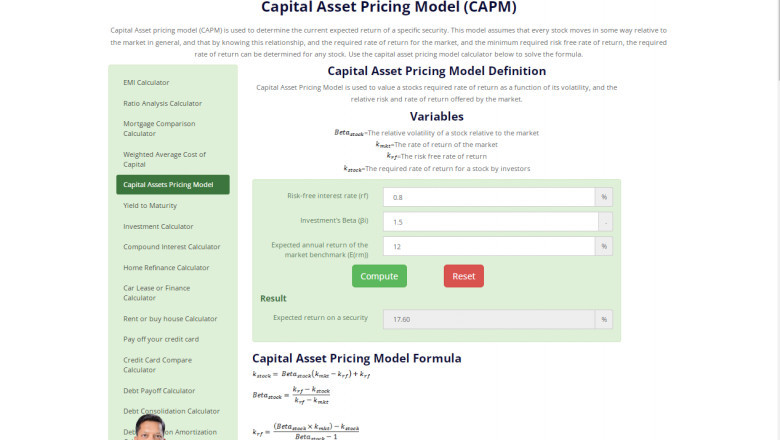views

Capital Asset Pricing Model Formulas

Capital Asset Pricing Model Formula
What is CAPM?
It reflects that the expected return on a security is equal to the risk-free return plus a risk premium, which is based on the beta of that security. Below is an illustration of the CAPM concept.
The Capital Asset Pricing Model Formula is a term that examines the relationship between the expected return and risk of investing in a security.
CAPM Formula and Calculation
CAPM is calculated according to the following formula:
Ra = Rrf + [Ba * (Rm –Rrf)]
Where:
Ra = Expected return on a security Rrf = Risk-free rate Ba = Beta of the security Rm = Expected return of the market
Note: “Risk Premium” = (Rm – Rrf)
The Capital Asset Pricing Model Formula is used for calculating the expected returns of an asset. It is based on the idea of systematic risk (otherwise known as non-diversifiable risk) that investors need to be compensated for in the form of a risk premium. A risk premium is a rate of return greater than the risk-free rate. When investing, investors desire a higher risk premium when taking on more risky investments.
Why CAPM is Important
The CAPM formula is widely used in the finance industry. It is vital in calculating the weighted average cost of capital (WACC), as CAPM computes the cost of equity.












